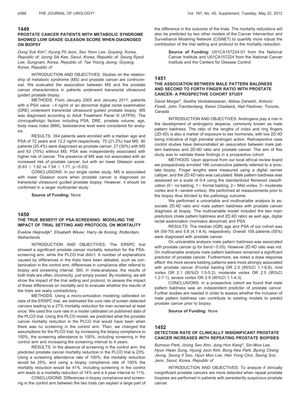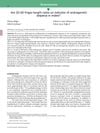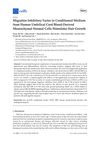The Association Between Male Pattern Baldness and Second to Fourth Finger Ratio with Prostate Cancer: A Prospective Cohort Study
April 2012
in “
The Journal of Urology
”

TLDR Male pattern baldness may predict prostate cancer risk.
In the 2012 study, researchers investigated the relationship between male pattern baldness and the ratio of the lengths of the index to ring fingers (2D:4D) as potential predictors of prostate cancer. The study enrolled 196 consecutive patients referred for prostate biopsy. Measurements of finger lengths and assessment of male pattern baldness using the Norwood classification were performed prior to the biopsy. The results showed that, on univariable analysis, male pattern baldness was associated with prostate cancer (p for trend=0.03), but the 2D:4D ratio was not. Multivariable analysis confirmed that male pattern baldness remained a significant predictor of prostate cancer, with a dose-response effect observed where more severe balding patterns were more strongly associated with prostate cancer. The study concluded that male pattern baldness was an independent predictor of prostate cancer and suggested that further studies are needed to assess whether the inclusion of male pattern baldness can improve models for predicting prostate cancer prior to biopsy.






